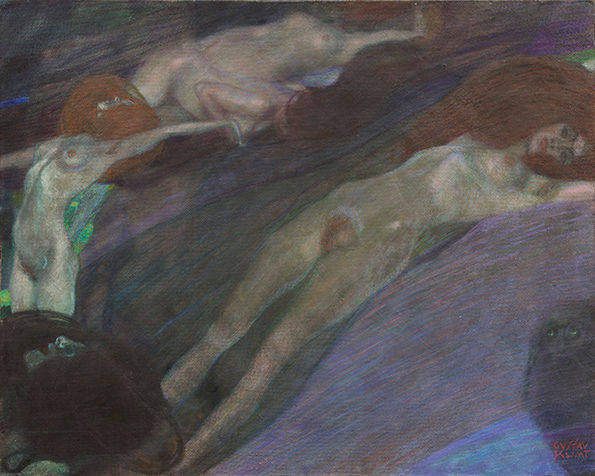
The fixation of male artists on the female body is a well-chronicled fact in the annals of art history, perhaps especially with regard to these three Austrian masters of Modernism. Their iconic works are currently encouraging viewers to consider “the woman question.”
More than 65 paintings, watercolors, and drawings by Viennese Secessionists Gustav Klimt, Egon Schiele, and Oskar Kokoschka are currently on display at Galerie St. Etienne in New York City through June 30.

Titled “The Woman Question,” the exhibition seeks to explore they ways in which these monumental modernists explored conceptions of gender relations and sexual identity at the turn of the 20th century. “The exhibition focuses on four principal subjects,” the gallery says, “the formal portrait, the nude, the couple, and the mother. Klimt’s sensuous, flattering drawings of women contrast with the contorted bodies depicted by Kokoschka. Schiele’s nudes were so provocative that some could not, at the time, be publicly exhibited.”

The exhibition takes its titled from the artists’ approach, which they themselves referred to as the “woman question,” albeit in slightly different ways. Continuing, the gallery offers, “In turn-of- the-century Vienna, females were viewed as closer to nature and hence more inherently ‘primitive’ than males. Prompted by Darwin’s theories, men hypothesized that allowing women to have influence or power outside the home would lead to a dangerous ‘devolution’ of the human species. Gustav Klimt repeatedly depicted women as amphibious creatures, as in ‘Moving Water,’ 1898, an oil on canvas painting. The wanton sexuality of Klimt’s nudes symbolizes not liberation but inequality.”
“The Woman Question” equally explores the gender dynamics in Kokoschka’s tumultuous lithographs and Schiele’s early mature works, circa 1917. To learn more, visit Galerie St. Etienne.
This article was featured in Fine Art Today, a weekly e-newsletter from Fine Art Connoisseur magazine. To start receiving Fine Art Today for free, click here.







